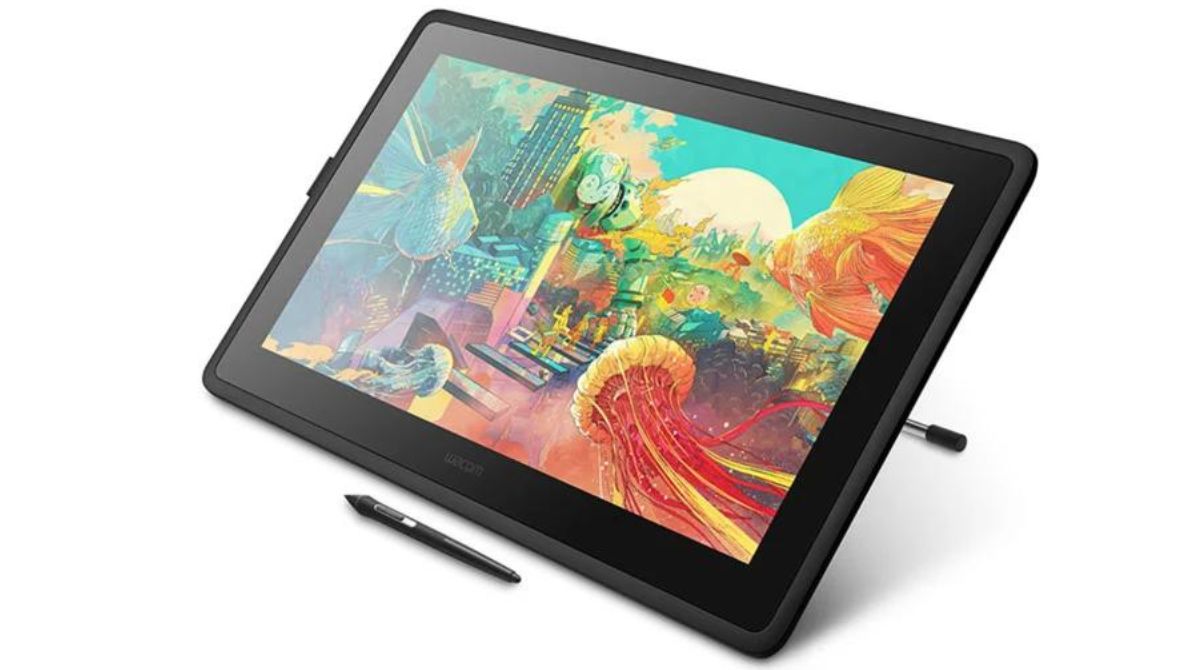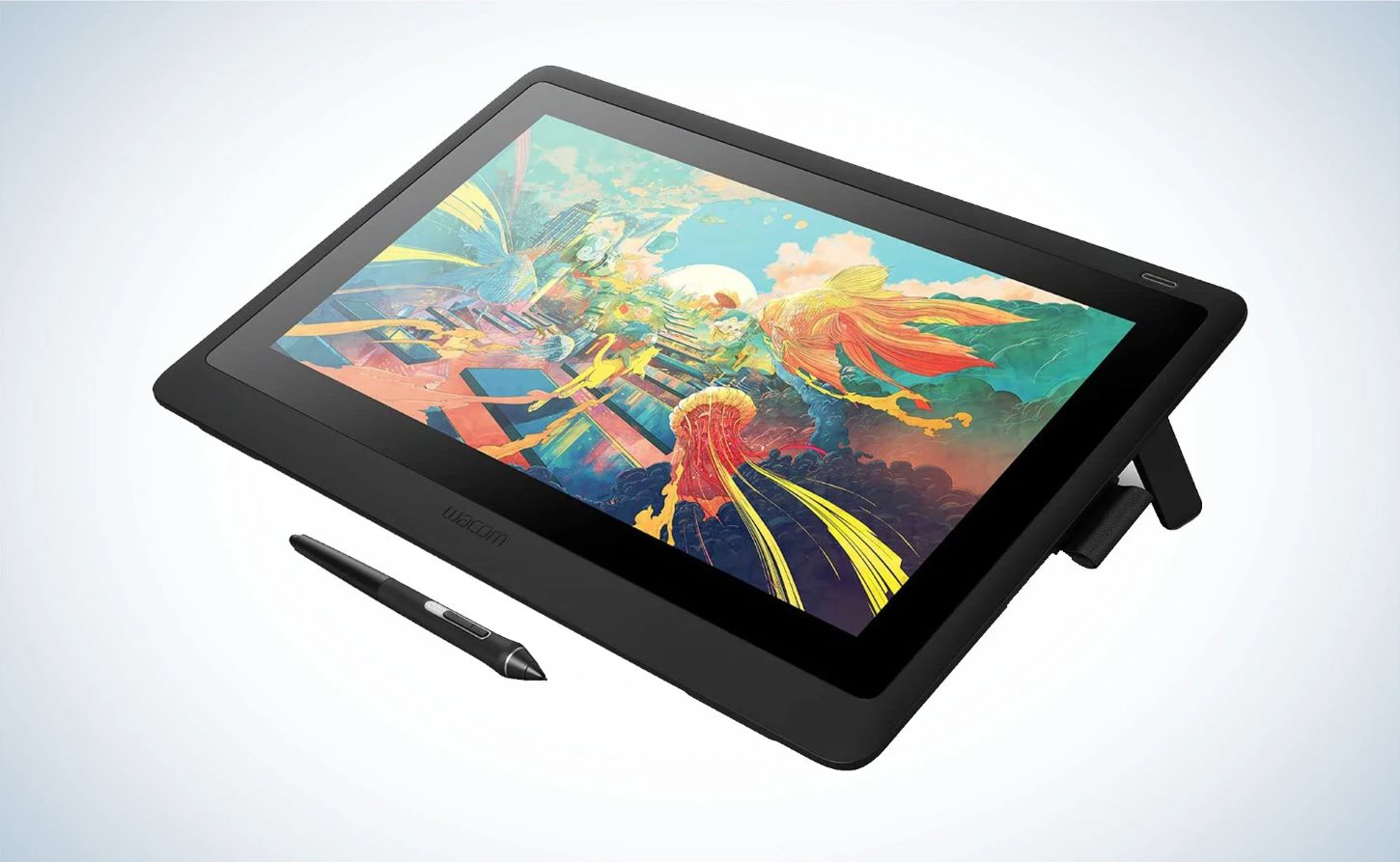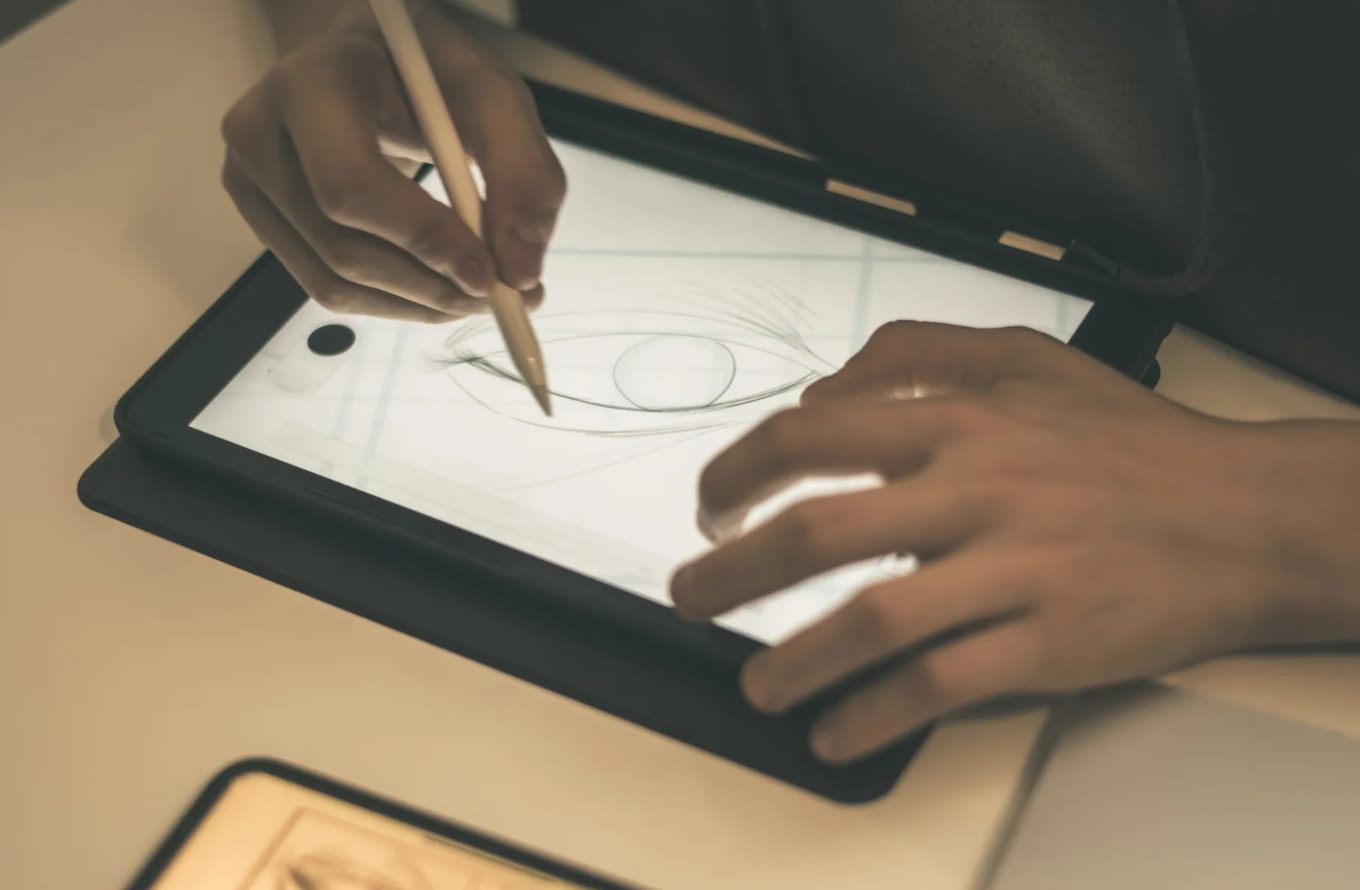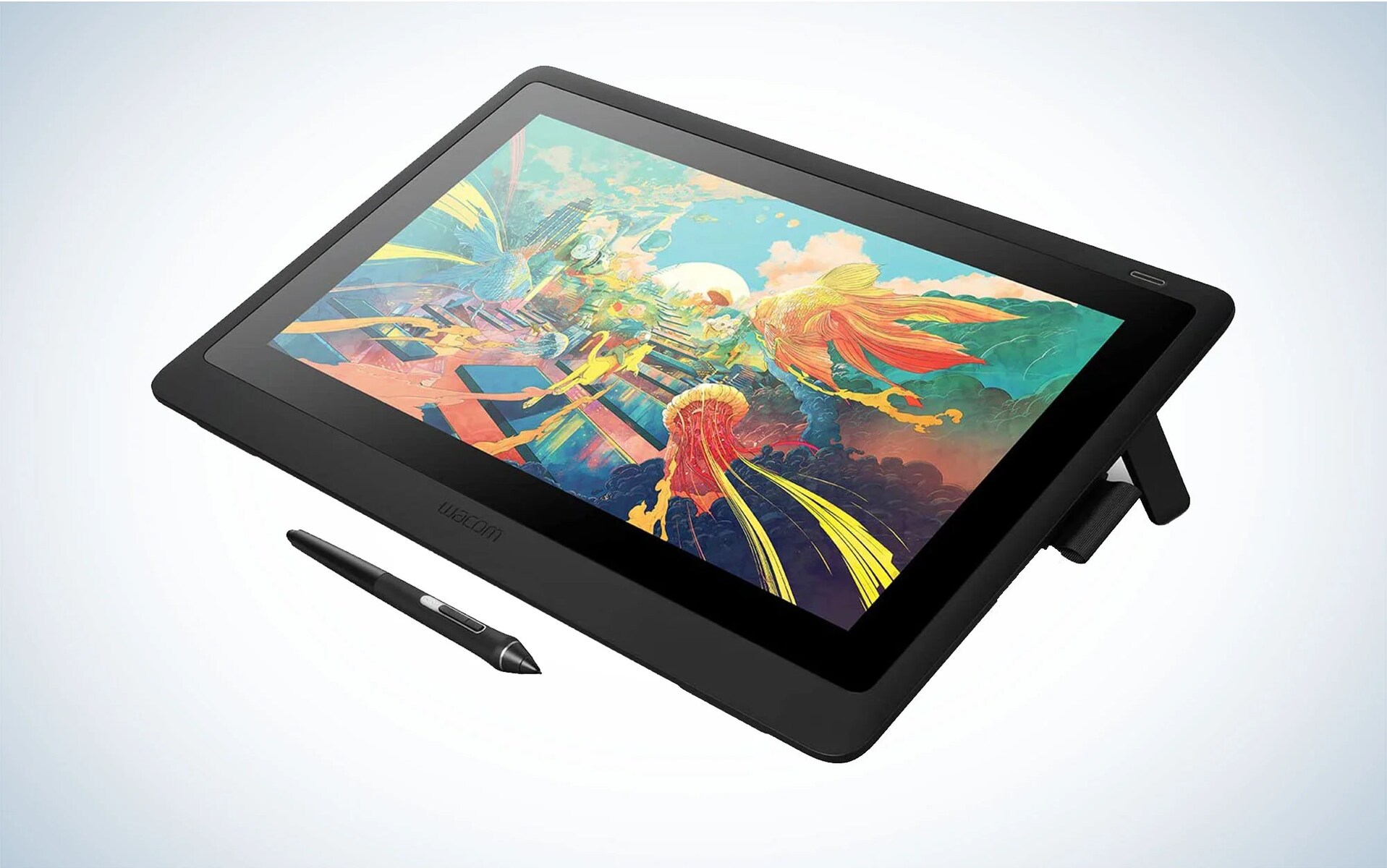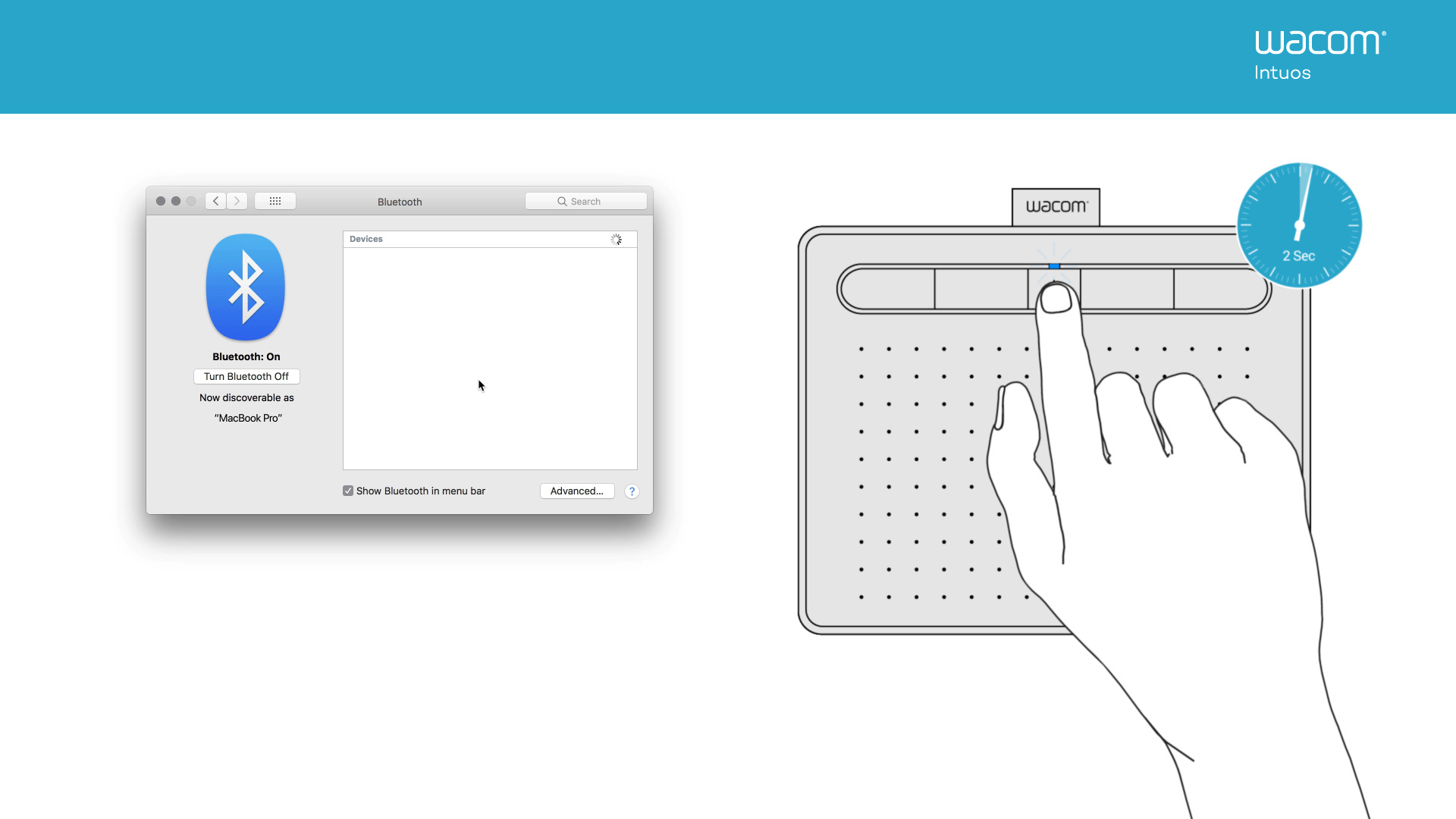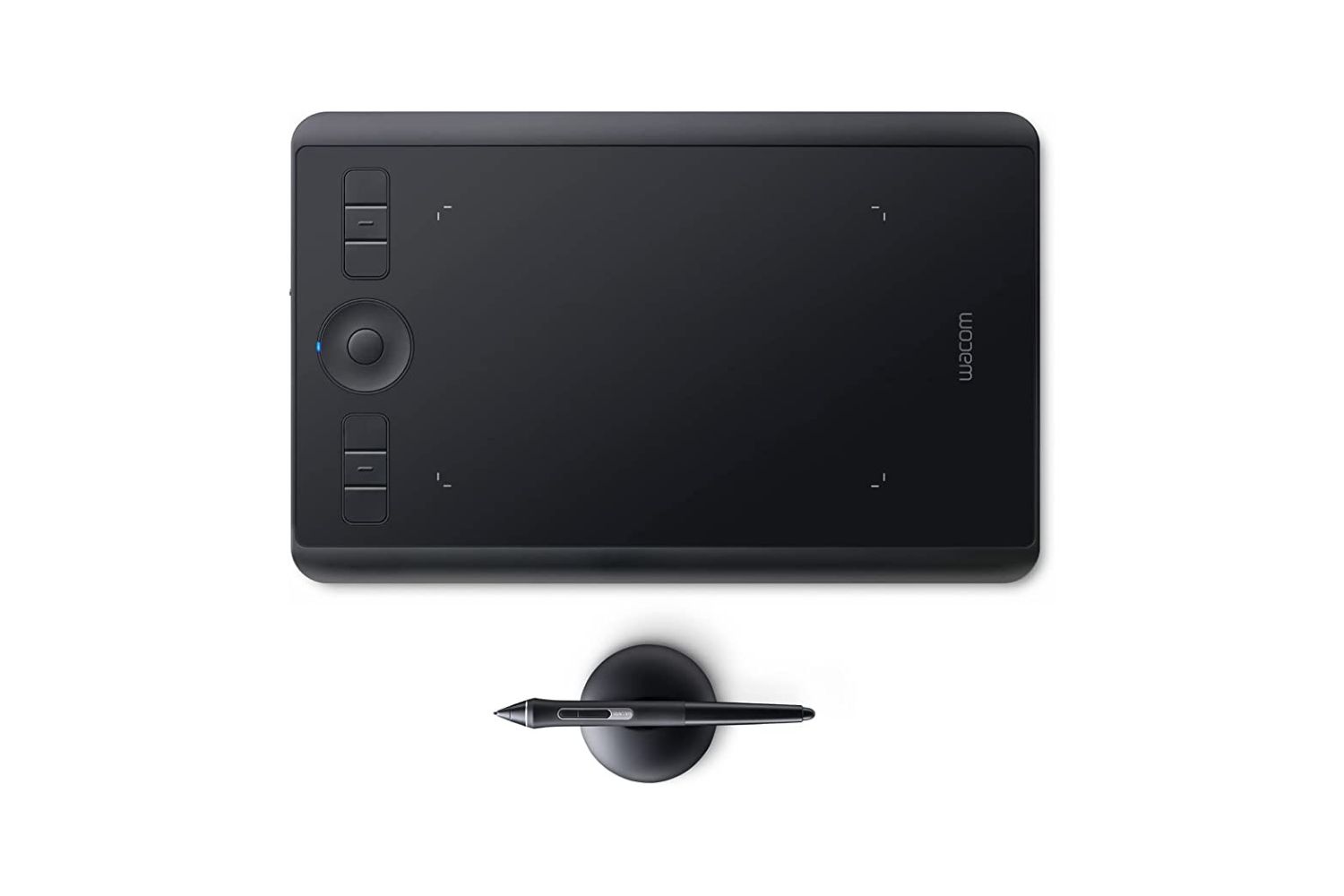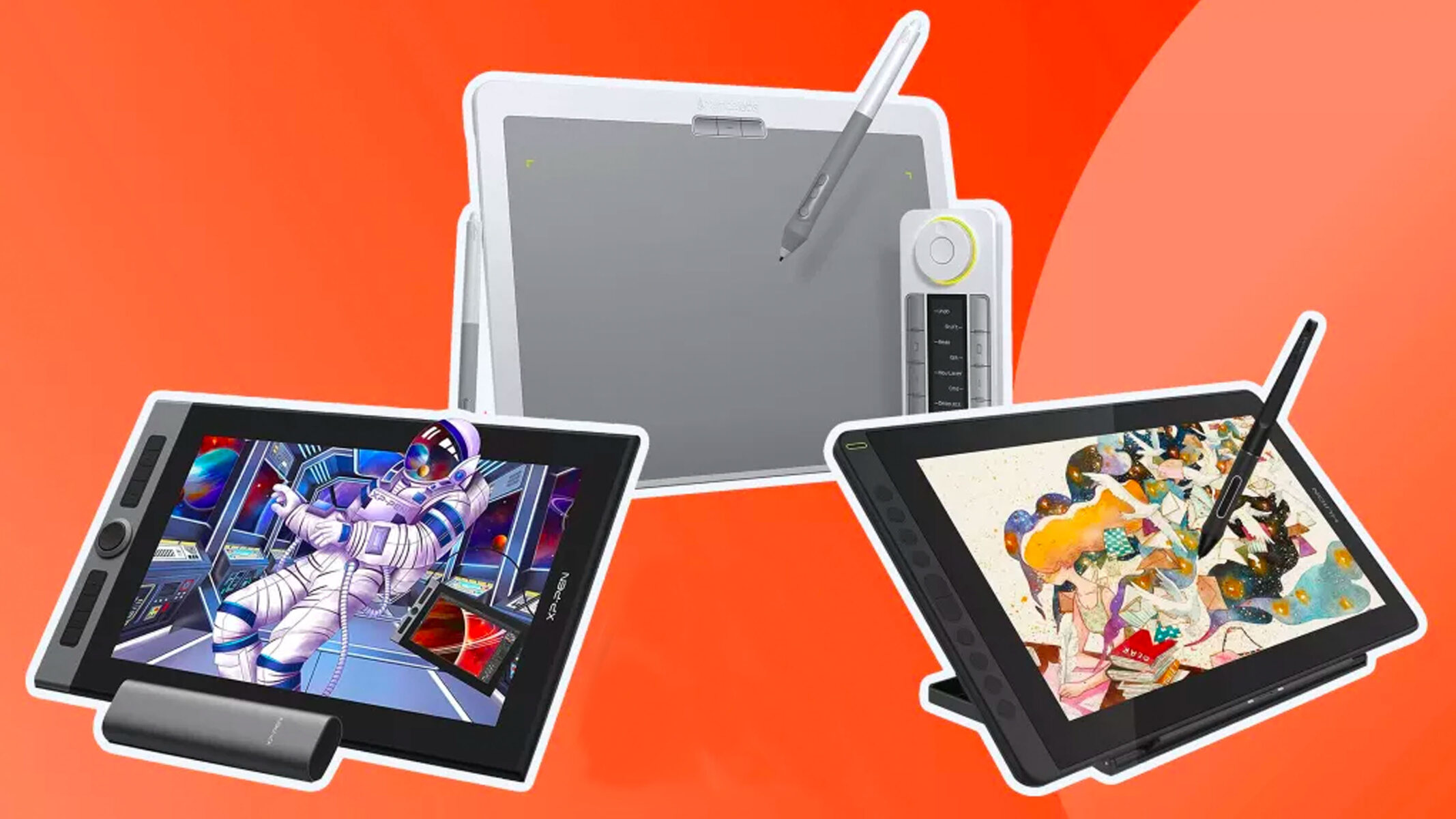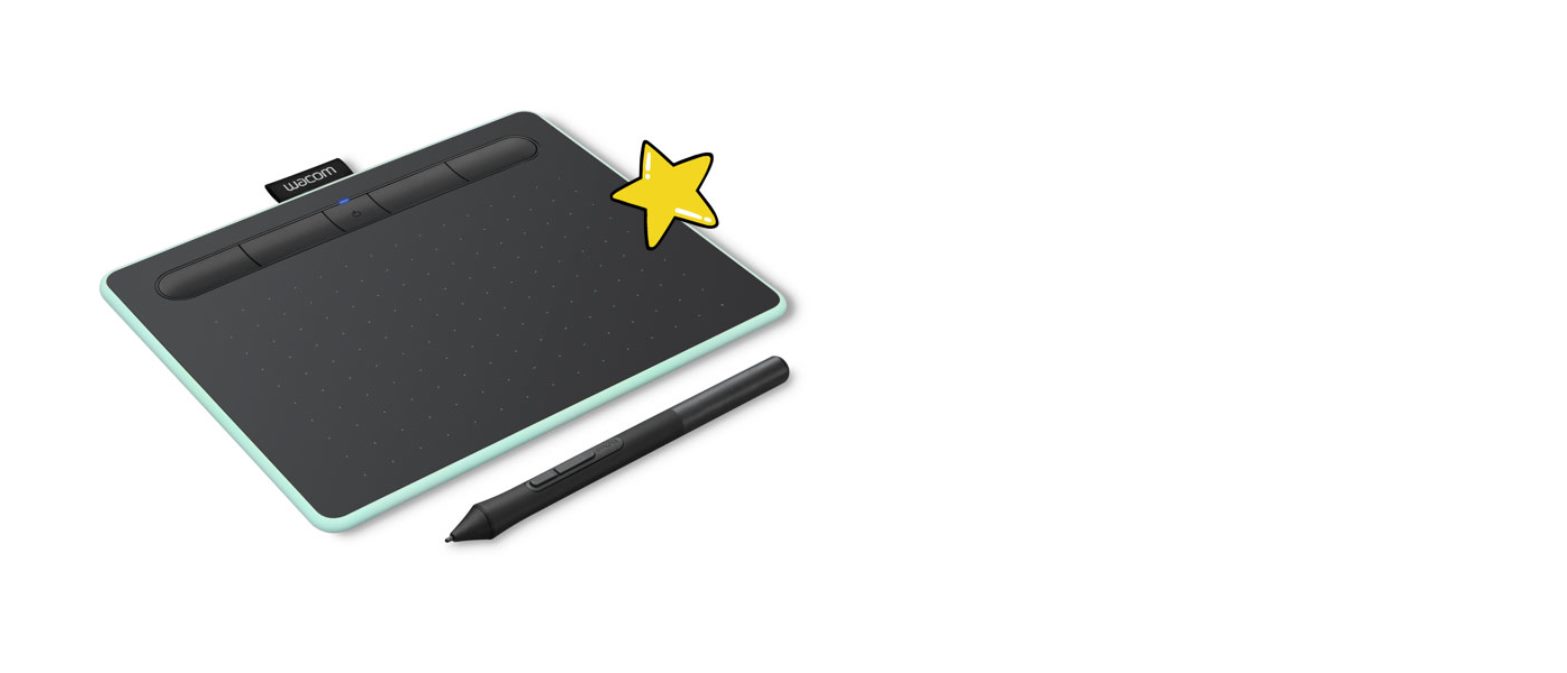Introduction
Are you a digital artist or graphic designer who relies on a Wacom Intuos tablet for your creative work? If so, you may have encountered the frustrating issue of lagging while using your tablet. This problem can significantly hinder your workflow and make your artistic process much more difficult.
Lagging refers to the delay or unresponsiveness that occurs when you use your Wacom Intuos tablet, resulting in a noticeable delay between your strokes on the tablet and the corresponding actions on your computer screen. This can be incredibly frustrating, as it interrupts your flow and disrupts the smoothness of your creations. Understanding the causes of lagging can help you troubleshoot the issue and find effective solutions.
In this article, we will explore some of the possible causes of lagging in your Wacom Intuos tablet and provide troubleshooting tips to help you overcome this issue. Whether you are a seasoned digital artist or a beginner in the world of graphic design, we hope to offer insights that will help you improve your tablet performance and enhance your overall creative experience.
Before diving into the troubleshooting steps, it’s important to note that not all causes of lagging are within your control. Sometimes, external factors such as computer specifications or compatibility issues may be at play. However, by understanding the common causes and implementing the recommended solutions, you can significantly reduce or even eliminate lagging in your Wacom Intuos tablet.
So, if you’re ready to discover why your Wacom Intuos tablet may be lagging and learn how to address this issue, let’s get started with our troubleshooting guide!
Possible Causes of Lagging
When your Wacom Intuos tablet lags, it can be frustrating and impact your productivity. Understanding the potential causes of this issue can help you pinpoint the problem and find an appropriate solution. Here are some common culprits for lagging:
- Interference with Other Devices: Electronic devices near your tablet, such as smartphones or wireless routers, can cause interference that affects the tablet’s performance. This interference can lead to lagging and unresponsive strokes.
- Outdated Drivers: Having outdated tablet drivers can result in compatibility issues with your operating system or software. It’s essential to keep your tablet drivers up to date to ensure optimal performance and responsiveness.
- Insufficient System Resources: If your computer lacks the necessary resources to handle the demands of your Wacom Intuos tablet, you may experience lagging. Insufficient RAM or an overloaded CPU can cause delays in registering strokes and commands.
- Overload of Tablet Customization: While customization options can enhance your tablet experience, excessive customization can overload the tablet’s processing power, leading to lag. Complex brush settings, macros, or overlays can strain the tablet’s resources.
- Display Settings Conflicts: Conflicts between the tablet’s display settings and your computer’s display settings can cause lagging. Mismatched resolution, refresh rates, or scaling settings can result in delays when translating your strokes onto the screen.
Identifying the root cause of the lagging issue is crucial for implementing effective solutions. In the following sections, we will provide troubleshooting tips to address each potential cause and help you regain the smooth and responsive experience you expect from your Wacom Intuos tablet.
Interference with Other Devices
One of the possible causes of lagging in your Wacom Intuos tablet is interference from other electronic devices. The presence of devices like smartphones, wireless routers, or Bluetooth-enabled devices near your tablet can disrupt the tablet’s wireless connection and negatively impact its performance.
Wireless interference can cause delays and unresponsive strokes, leading to lagging. To minimize this interference, follow these troubleshooting steps:
- Distance from Other Devices: Ensure that your tablet is placed at a sufficient distance from other electronic devices. The closer the tablet is to devices emitting wireless signals, the higher the likelihood of interference. Try to create some distance between your tablet and other electronic devices in your workspace.
- Power Off Nearby Devices: Temporarily turn off or move other devices that may be causing interference. This includes smartphones, Bluetooth speakers, and other wireless devices that could potentially disrupt the wireless connection between your Wacom Intuos tablet and your computer.
- Switch to a Different Wireless Channel: If you are using a wireless connection for your tablet, consider changing the channel on your wireless router. This can help reduce interference from neighboring wireless networks and improve the tablet’s performance.
- Use Shielding Materials: Using shielding materials, such as aluminum foil or special electromagnetic shielding fabrics, can help reduce electromagnetic interference. Consider creating a makeshift shield around your tablet to prevent interference from reaching the tablet’s wireless receiver.
By implementing these troubleshooting steps, you can minimize or eliminate wireless interference that may be causing your Wacom Intuos tablet to lag. Keep in mind that these measures are intended to reduce external interference and improve the tablet’s wireless performance.
If you have taken these steps and continue to experience lagging issues, it is recommended to explore other potential causes and solutions, which will be addressed in the upcoming sections.
Outdated Drivers
Outdated drivers are a common cause of lagging in Wacom Intuos tablets. Over time, new software updates and operating system changes can render older drivers incompatible or inefficient. Keeping your tablet drivers up to date is essential for optimal performance and responsiveness.
To address lagging caused by outdated drivers, follow these troubleshooting steps:
- Visit the Wacom Website: Visit the official Wacom website and navigate to the support or downloads section. Look for the latest driver version available for your specific Wacom Intuos tablet model.
- Download and Install the Latest Driver: Download the latest driver for your tablet and follow the installation instructions provided by Wacom. Ensure that you select the correct driver that corresponds to your tablet model and operating system.
- Uninstall the Previous Driver: It is recommended to uninstall the previous driver before installing the new one. To do this, go to your computer’s Control Panel, locate the Wacom tablet driver, and choose to uninstall it. Restart your computer after the uninstallation is complete.
- Install the New Driver: Once the previous driver is uninstalled, proceed with installing the new driver that you downloaded. Follow the on-screen instructions to complete the installation process.
- Restart Your Computer: After the installation is complete, restart your computer. This will ensure that any changes made by the new driver are applied effectively.
By updating your tablet drivers to the latest version, you can ensure compatibility with your operating system and software, potentially resolving issues related to lagging. Regularly checking for driver updates and installing them promptly will help maintain the optimal performance of your Wacom Intuos tablet.
If you have updated your drivers and are still experiencing lagging issues, continue reading the following sections for additional troubleshooting steps to address other potential causes.
Insufficient System Resources
Insufficient system resources can contribute to lagging issues when using a Wacom Intuos tablet. If your computer doesn’t have enough resources to handle the demands of the tablet and the software you are using, delays in registering strokes and commands may occur.
To address lagging caused by insufficient system resources, consider the following troubleshooting steps:
- Check System Requirements: Ensure that your computer meets the minimum requirements for both the software you are using and the Wacom Intuos tablet. Check the system specifications recommended by the software and tablet manufacturer to ensure your computer has enough RAM, processing power, and disk space to handle the workload.
- Close Unnecessary Programs: Close any unnecessary programs or processes running in the background. These programs can use up a significant portion of your system resources, causing lags in tablet responsiveness. By freeing up system resources, you can allocate more power to your tablet and software, potentially improving performance.
- Upgrade System Components: If your computer is consistently struggling to handle the demands of your Wacom Intuos tablet, you may want to consider upgrading certain hardware components. Adding more RAM or upgrading your processor can significantly improve your system’s performance and reduce lagging issues.
- Free Up Disk Space: A lack of available disk space can impact overall system performance. Ensure that you have enough free space on your hard drive to allow for smooth operation. Use disk cleanup utilities to remove unnecessary files and programs, freeing up valuable disk space.
By addressing these potential causes of insufficient system resources, you can optimize your computer’s performance and potentially resolve lagging issues with your Wacom Intuos tablet. However, if the problem persists, continue reading the upcoming sections for additional troubleshooting tips.
Overload of Tablet Customization
Customizing your Wacom Intuos tablet can make it truly personalized and tailored to your specific needs. However, excessive customization can overload the tablet’s processing power, leading to lagging and unresponsive strokes. It’s essential to find a balance between customization and tablet performance.
If you’re experiencing lagging due to an overload of tablet customization, consider the following troubleshooting steps:
- Reset Tablet Preferences: Resetting your tablet preferences to their default settings can help eliminate any conflicting customization that may be causing the lag. Consult your tablet’s user manual or the manufacturer’s website for instructions on how to reset your specific model of Wacom Intuos tablet.
- Simplify Customization Options: Review your customization options and streamline them. Consider removing any unnecessary or rarely used features, brushes, or macros. By keeping only the customization elements you frequently utilize, you can reduce the processing load on the tablet and potentially improve its responsiveness.
- Remove Overlays: Overlays, such as grids or button icons, can be helpful for certain workflows. However, if you are using multiple overlays simultaneously, it can strain the tablet’s resources. Try using fewer overlays or only enable them when they are really necessary.
- Reduce Brush Complexity: Complex brush settings, such as high-resolution textures or intricate brush dynamics, can make the tablet work harder to render your strokes. Simplify your brush settings by reducing the complexity of the brushes you use or creating custom brushes with lighter specifications.
By simplifying your tablet customization and reducing the processing load, you can potentially resolve lagging issues in your Wacom Intuos tablet. Remember that finding the right balance between customization and tablet performance may require some experimentation and adjustment based on your specific needs.
If these troubleshooting steps do not alleviate the lagging issue, continue reading the upcoming sections for more potential causes and solutions to address the problem.
Display Settings Conflicts
Conflicts between the display settings of your Wacom Intuos tablet and your computer can also lead to lagging. Mismatched resolution, refresh rates, or scaling settings can cause delays when translating your strokes onto the screen.
To troubleshoot display settings conflicts and address lagging issues, follow these steps:
- Check Resolution and Scaling Settings: Ensure that the resolution and scaling settings on your computer match those of your Wacom Intuos tablet. Mismatched settings can result in a misalignment between your strokes and the actual positioning on the screen, causing lagging. Adjust the display settings accordingly to achieve a consistent experience.
- Refresh Rate Compatibility: Verify that the refresh rate of your monitor is compatible with your Wacom Intuos tablet. Some tablets have specific refresh rate requirements, and using a monitor with an incompatible refresh rate can lead to lagging. Refer to the tablet’s documentation or the manufacturer’s website for the recommended refresh rate.
- Disable Windows Ink: Windows Ink can sometimes cause conflicts with Wacom tablets, leading to lagging. To disable Windows Ink, go to your tablet settings and navigate to the Windows Ink or Pen settings. Disable any options related to Windows Ink and check if it improves the tablet’s performance.
- Calibrate Tablet: Performing a calibration of your Wacom Intuos tablet can help ensure proper alignment between your pen strokes and the on-screen cursor. Use the calibration utility in your tablet settings to fine-tune the alignment and reduce any lag caused by display discrepancies.
By addressing these display settings conflicts, you can potentially improve the performance of your Wacom Intuos tablet and reduce lagging. Keep in mind that these troubleshooting steps may require some adjustments and experimentation to find the optimal settings for your specific setup.
If you continue to experience lagging issues even after applying these solutions, continue reading the upcoming sections for additional troubleshooting tips.
Troubleshooting Tips
Experiencing lagging issues with your Wacom Intuos tablet can be frustrating, but there are several troubleshooting tips you can try to resolve the problem. These tips address various potential causes and can help improve the tablet’s performance and responsiveness. Here are some additional troubleshooting tips:
- Check for Interference: In addition to addressing interference from other devices, ensure that your tablet is not positioned near other potential sources of interference, such as fluorescent lights or magnetic objects.
- Update Wacom Tablet Drivers: Keeping your tablet drivers up to date is crucial for optimal performance. Regularly check for driver updates on the official Wacom website and install the latest version compatible with your tablet and operating system.
- Optimize System Resources: Close unnecessary programs and processes, free up disk space, and consider upgrading your computer’s hardware components, such as RAM or CPU, to ensure sufficient system resources for smooth tablet operation.
- Simplify Tablet Customization: Streamline your tablet’s customization options, remove unnecessary overlays or complex brushes, and reset preferences to default settings if needed.
- Adjust Display Settings: Ensure that the resolution, scaling settings, and refresh rate of your computer are compatible with your Wacom Intuos tablet. Disable Windows Ink if necessary and perform a calibration to fine-tune the alignment between your pen strokes and the screen.
- Try a Different USB Port: If you are using a wired connection, try connecting your tablet to a different USB port. Sometimes, USB ports can have different levels of compatibility and performance.
- Use a Wired Connection: If you are experiencing lagging with a wireless connection, consider switching to a wired connection. A direct USB connection between your tablet and computer can often result in faster and more reliable performance.
- Reinstall Tablet Software: If none of the above steps solve the lagging issue, you can consider reinstalling the tablet software. Uninstall the software first, restart your computer, and then reinstall the latest version from the official Wacom website.
Remember that troubleshooting may involve a combination of these steps, and the effectiveness of each solution can vary depending on your specific setup and requirements. Implementing these tips can help you identify and resolve the cause of the lagging issue with your Wacom Intuos tablet.
If the problem persists, it may be helpful to reach out to Wacom’s customer support or consult knowledgeable online communities to receive further assistance in troubleshooting and resolving the lagging issue.
Check for Interference
Interference from external sources can often contribute to lagging issues with your Wacom Intuos tablet. It’s important to identify and minimize any potential sources of interference to ensure optimal tablet performance. Here are some troubleshooting steps to check for interference:
- Device Proximity: Examine the space surrounding your tablet setup. Ensure that there are no electronic devices placed too close to your tablet, such as smartphones, wireless routers, or other devices that emit wireless signals. These devices can interfere with the tablet’s wireless connection and cause lagging. Create some distance between your tablet and other electronic devices if possible.
- Power Off Nearby Devices: If you suspect that nearby devices are causing interference, try temporarily turning them off or moving them further away. This includes devices such as smartphones, Bluetooth speakers, and even microwave ovens, as they can emit electromagnetic radiation that may interfere with the tablet’s wireless signal.
- Change Wireless Channels: If you are using a wireless connection for your tablet, consider changing the wireless channel on your router. Interference from neighboring wireless networks operating on the same channel can disrupt the tablet’s connection. Access your router’s settings and select a different channel to minimize interference and improve performance.
- Use Shielding Materials: Electromagnetic shielding materials, such as aluminum foil or special fabrics designed for electromagnetic interference (EMI) shielding, can help reduce interference. You can create a makeshift shield around your tablet or use these materials to block or redirect electromagnetic waves that may be causing interference. Experiment with different shielding techniques to find the most effective solution for your setup.
By implementing these troubleshooting steps, you can minimize the impact of interference on your Wacom Intuos tablet and potentially improve its performance. However, if you are still experiencing lagging issues, it is advisable to explore other potential causes and solutions discussed in the previous sections.
Remember, troubleshooting requires patience and an understanding that resolving the issue may involve a combination of steps depending on your specific circumstances. If necessary, consult with Wacom’s customer support or seek assistance from online communities specialized in Wacom tablets to get further guidance in addressing the interference and lagging problem.
Update Wacom Tablet Drivers
Outdated drivers can often be a significant cause of lagging issues with your Wacom Intuos tablet. Keeping your tablet drivers up to date is essential for ensuring compatibility with your operating system and maximizing its performance. If you’re experiencing lagging, here are some troubleshooting steps to update your Wacom tablet drivers:
- Visit the Wacom Website: Go to the official Wacom website and navigate to the support or downloads section. Look for the driver downloads available for your specific model of Wacom Intuos tablet.
- Choose the Correct Driver: Identify the appropriate driver for your tablet model and operating system. Ensure that you select the correct version to avoid compatibility issues.
- Download the Latest Driver: Download the latest driver version provided by Wacom. The file will typically be in executable format.
- Install the Driver: Locate the downloaded driver file on your computer and follow the installation instructions provided. Typically, this involves double-clicking the file and following the prompts to complete the installation process.
- Restart Your Computer: After the driver installation is complete, it’s important to restart your computer. This helps ensure that any changes made by the new driver are fully applied and take effect.
Regularly updating your Wacom tablet drivers can resolve compatibility issues, improve stability, and address lagging problems. It’s recommended to check for driver updates periodically, as new versions are released to address bugs, enhance performance, and provide better optimization for your tablet.
If you continue to experience lagging issues after updating the drivers, it may be necessary to explore other potential causes and solutions discussed in the earlier sections. Remember that troubleshooting is a process of elimination and may require multiple steps or a combination of solutions to effectively resolve the issue.
If further assistance is needed, consider reaching out to Wacom’s customer support for guidance specific to your tablet model or consult online communities where fellow users can share their experiences and offer additional troubleshooting advice.
Optimize System Resources
Inadequate system resources can contribute to lagging issues with your Wacom Intuos tablet. If your computer is struggling to handle the demands of the tablet and the software you are using, it can result in delays and unresponsive strokes. To address this problem, optimizing your system resources is crucial. Here are some troubleshooting steps to optimize system resources:
- Check System Requirements: Verify that your computer meets the minimum requirements for both the software you are using and the Wacom Intuos tablet. Review the system specifications recommended by the software and tablet manufacturer to ensure that your computer has enough RAM, processing power, and disk space to handle the workload effectively.
- Close Unnecessary Programs: Close any unnecessary programs or processes running in the background. These programs can consume a significant portion of your system resources, causing lagging in your tablet’s responsiveness. By closing these programs, you free up system resources, allowing your computer to allocate more power to the tablet and software.
- Free Up Disk Space: Insufficient disk space can also impact system performance. Delete unused files, temporary files, and applications that you no longer need to free up valuable disk space. Use disk cleanup utilities to remove unnecessary files and ensure that you have enough space to facilitate smooth tablet operation.
- Upgrade System Components: If your computer consistently struggles to handle the demands of your Wacom Intuos tablet, you may want to consider upgrading certain hardware components. Adding more RAM or upgrading your processor can significantly improve your system’s performance and reduce lagging issues. Consult with a computer technician or research compatible upgrades for your specific computer model.
By optimizing your system resources, you ensure that your computer has the necessary power and capacity to handle the workload required by your Wacom Intuos tablet. This can result in smoother strokes, reduced lagging, and an improved overall user experience.
If you have implemented these troubleshooting steps and are still experiencing lagging issues, it may be necessary to explore other potential causes and solutions outlined in the previous sections. Remember that troubleshooting can involve a combination of steps, and resolution may vary depending on your specific computer setup and requirements.
If further assistance is needed, don’t hesitate to seek support from Wacom’s customer service or consult online communities where you can find fellow users who have encountered similar issues and may provide additional troubleshooting guidance.
Simplify Tablet Customization
While customization options can enhance your experience with a Wacom Intuos tablet, excessive customization can overload the tablet’s processing power and lead to lagging and unresponsive strokes. Finding the right balance between customization and performance is crucial. To address lagging caused by an overload of tablet customization, consider the following troubleshooting steps:
- Reset Tablet Preferences: Resetting your tablet preferences to their default settings can help eliminate any conflicting or unnecessary customization that may be causing the lag. Consult your tablet’s user manual or the manufacturer’s website for instructions on how to reset your specific model of Wacom Intuos tablet.
- Simplify Customization Options: Review your customization options and streamline them. Remove any unnecessary or rarely used features, brushes, or macros. By keeping only the customization elements you frequently utilize, you reduce the processing load on the tablet and potentially improve its responsiveness.
- Remove Overlays: Overlays, such as grids or button icons, can be helpful for certain workflows. However, if you are using multiple overlays simultaneously, it can strain the tablet’s resources. Try using fewer overlays or only enable them when they are necessary to reduce the processing load on the tablet.
- Reduce Brush Complexity: Complex brush settings, such as high-resolution textures or intricate brush dynamics, can make the tablet work harder to render your strokes. Simplify your brush settings by reducing the complexity of the brushes you use or creating custom brushes with lighter specifications. This can help alleviate the strain on the tablet and improve its responsiveness.
By simplifying your tablet customization, you can reduce the processing load on your Wacom Intuos tablet and potentially resolve the lagging issues. It’s important to find the right balance between customization and tablet performance to ensure a smooth and responsive creative workflow.
Remember that troubleshooting may involve experimenting with different settings and options to determine the optimal level of customization for your specific needs. If these troubleshooting steps do not resolve the lagging issue, continue reading the previous sections for additional potential causes and solutions.
If further guidance is needed, consider reaching out to Wacom’s customer support or consulting online communities where fellow users may share their experiences and offer additional troubleshooting advice specific to your tablet model.
Adjust Display Settings
Display settings conflicts can contribute to lagging issues with your Wacom Intuos tablet. Mismatched resolution, scaling settings, or refresh rates can cause delays when translating your strokes onto the screen, resulting in lagging and an unresponsive tablet. To troubleshoot this problem, consider the following steps to adjust and optimize your display settings:
- Check Resolution and Scaling Settings: Verify that the resolution and scaling settings on your computer match those of your Wacom Intuos tablet. A mismatch in these settings can lead to a misalignment between your strokes and the actual position on the screen, causing lagging. Adjust the display settings to achieve a consistent experience between the tablet and your computer’s display.
- Refresh Rate Compatibility: Ensure that the refresh rate of your monitor is compatible with your Wacom Intuos tablet. Some tablets have specific refresh rate requirements, and using a monitor with an incompatible refresh rate could lead to lagging. Refer to the tablet’s documentation or the manufacturer’s website for the recommended refresh rate settings.
- Disable Windows Ink: Windows Ink features on your computer can sometimes conflict with Wacom tablets, causing lagging. To disable Windows Ink, go to your tablet settings and navigate to the Windows Ink or Pen settings. Disable any options related to Windows Ink and check if it improves the tablet’s performance.
- Calibrate Tablet: Performing a calibration on your Wacom Intuos tablet can help fine-tune the alignment between your pen strokes and the on-screen cursor. Use the calibration utility in your tablet settings to ensure accurate registration of your strokes and reduce any lag caused by display discrepancies.
By adjusting your display settings, you can mitigate conflicts that may be causing lagging issues with your Wacom Intuos tablet. However, it’s important to note that finding the optimal display settings may require some trial and error based on your specific hardware setup and software requirements.
If you continue to experience lagging problems after adjusting the display settings, it may be necessary to explore other potential causes and solutions outlined in the previous sections. Remember that troubleshooting may involve a combination of steps, and the effectiveness of each solution can vary depending on your specific circumstances.
If further assistance is needed, consider reaching out to Wacom’s customer support for guidance specific to your tablet model or consult online communities where fellow users can share their experiences and offer additional troubleshooting advice.
Conclusion
If you’re experiencing lagging issues with your Wacom Intuos tablet, addressing the root causes and implementing effective solutions can help improve its performance and responsiveness. Throughout this troubleshooting guide, we have explored various potential causes of lagging and provided troubleshooting tips to overcome these issues.
We discussed how interference from other devices can disrupt the tablet’s wireless connection and cause lagging. By creating distance between your tablet and other electronic devices, switching to a different wireless channel, or using shielding materials, you can minimize interference and improve tablet performance.
We also highlighted the importance of updating your Wacom tablet drivers regularly. Outdated drivers can lead to compatibility issues and hinder optimal tablet performance. By visiting the official Wacom website, downloading the latest drivers, and following the installation instructions, you can ensure your tablet is up to date and functioning at its best.
Inadequate system resources, such as insufficient RAM or overloaded CPUs, can also contribute to lagging. By checking system requirements, closing unnecessary programs, freeing up disk space, and considering hardware upgrades, you can optimize your system resources and reduce lagging issues.
Customizing your tablet is crucial for personalizing your creative experience, but excessive customization can overload the tablet’s processing power. By simplifying tablet customization, resetting preferences, removing unnecessary features, and reducing brush complexity, you can alleviate strain on the tablet and improve responsiveness.
Display settings conflicts, such as mismatched resolutions, scaling settings, and refresh rates, can also cause lagging. By reviewing and adjusting these settings to achieve compatibility between your Wacom tablet and computer display, you can minimize discrepancies and improve overall performance.
It’s important to remember that troubleshooting involves a process of elimination, and not all solutions may work for every individual case. If you have followed the troubleshooting steps outlined in this guide and are still experiencing lagging issues with your Wacom Intuos tablet, it is recommended to seek further assistance from Wacom’s customer support or consult with knowledgeable online communities.
By identifying and addressing the causes of lagging, you can ensure a smoother and more enjoyable creative experience with your Wacom Intuos tablet. With proper troubleshooting and optimization, you can overcome these challenges and unleash your artistic potential without the frustrating lag. Keep exploring, experimenting, and seeking solutions to make the most of your Wacom Intuos tablet and boost your productivity as a digital artist or graphic designer.









